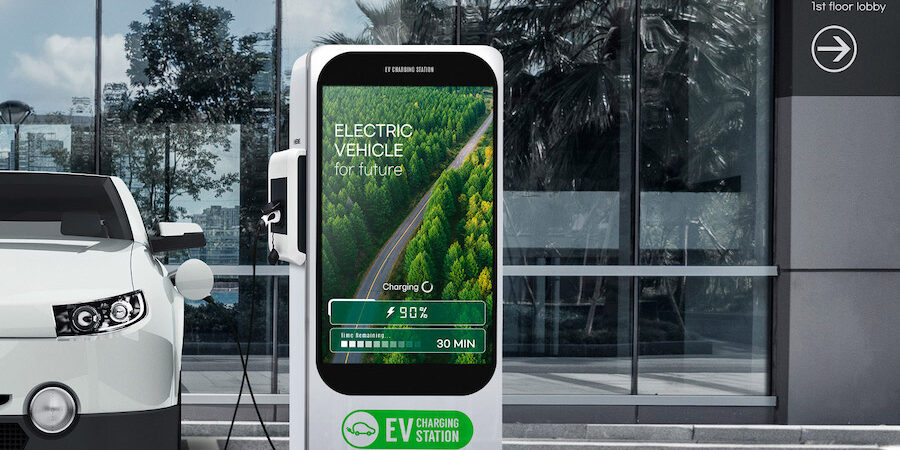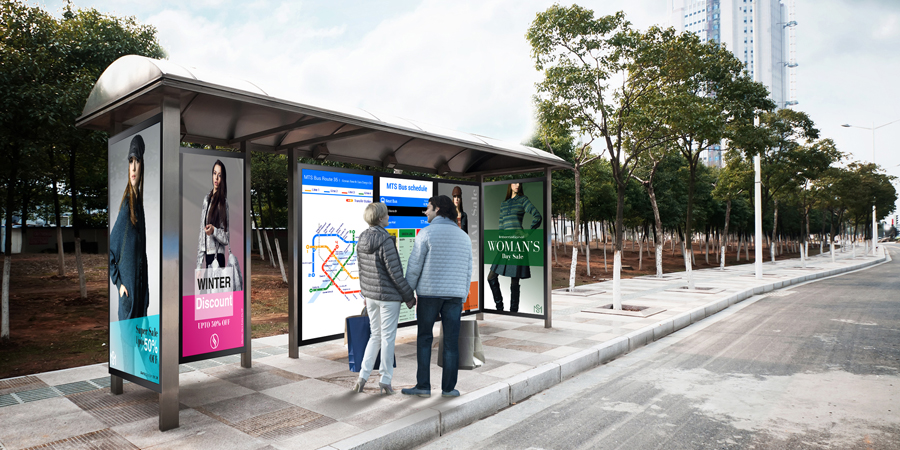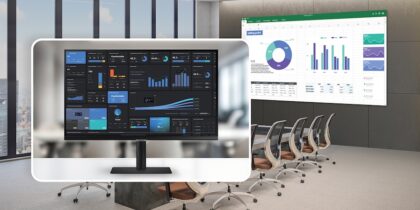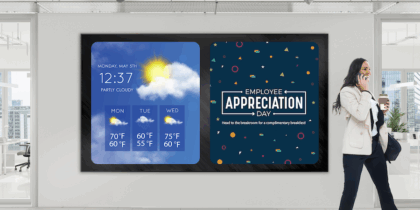In a smart city, digital signage can help ease the pressures of metropolitan living. Outdoor LED displays, for instance, can warn drivers about accidents complicating their commutes. Digital signage can also help folks navigate to popular sites and provide guidance at EV charging stations. Cloud-based software can pull everything together, combining information distribution and emergency communications.
What makes a smart city
Data, networks and software are the pillars of smart city programs. The data can come from any device that generates digital information:
- High-resolution displays help cities communicate with people and manage metropolitan environments.
- High-tech sensors detect pollutants, traffic volumes and weather changes.
- Digital video cameras monitor streets, intersections and places that attract crowds.
- Applications using AI and machine learning digest the data, helping leaders discern trends and forecast what to expect in weeks or years to come.
Cities are growing smarter with the evolution of data science and learning algorithms. By one estimate, the smart cities market could surpass $700 billion by 2031, a four-fold jump from $160 billion in 2021.
What does a smart city look like? Here are a few examples:
- Chicago installed wireless LEDs to reduce the cost and energy consumption of streetlights.
- New York City uses sensors to make waste management and garbage collection more efficient.
- San Antonio, Texas, leaders are gathering public feedback first before they start plowing tax money into advanced smart city technology.
The common thread among smart city projects is that each municipality must figure out what makes the most sense for its unique demographics, location and climate. What pleases the folks in Toronto could be a dud in Toledo.
Design flourishing urban communities
Learn about turnkey digital solutions to prioritize speed, flexibility and data-driven insights. Download Now
Thus, city leaders must carefully consider the technologies that have the best chance of driving smart outcomes in their communities.
City wayfinding: Signage goes digital
Wayfinding is a technique using signs to guide people to places. At the ballpark, wayfinding signs direct fans to concession stands and restrooms. A city’s wayfinding program might direct tourists to art districts or historic buildings.
The modern, smart-city approach to wayfinding installs durable, weatherproof LED video displays to help pedestrians find points of interest. For instance, a collection of video kiosks, such as Samsung Kiosks, installed at strategic locations in a downtown area could tap the advantages of digital displays (easy updates, live video, etc.). The wayfinding program in Eugene, Oregon, provides a good introduction to this kind of civic navigation.
Outdoor LED displays deliver essential information
Digital out-of-home (DOOH) displays give smart cities a high-resolution way to keep the public informed. Communities might use DOOH displays for weather forecasts or real-time updates of events and competitions. A city that hosts a Formula One-style race, for instance, could post race highlights and sports-related content for people standing in line for tickets or snacks at concession stands.
Transportation planners often use large outdoor displays to post traffic updates and public transit schedules. Indeed, just about any kind of information the public wants to know can be digitized and displayed. Moreover, cities can charge for advertising on outdoor displays, raising revenue in much the same way that transit agencies do with static ads on the sides of buses.
Displays enliven EV charging stations
Electric vehicle (EV) owners can’t dash into and out of a filling station like their gas-guzzling brethren. They need something to do while they’re recharging their batteries, which is motivating manufacturers of EV recharging stations to integrate outdoor digital video displays into their products.
With the EV market expected to grow 22% in 2024 alone, this kind of video application will become increasingly attractive for cities adding EV charging infrastructure to parking lots and other city-owned properties.
Software makes digital video manageable
Smart cities with fleets of outdoor displays need software to upload content and orchestrate devices. The Samsung VXT CMS platform shows how this technology works.
Hosted in the cloud and accessible on any internet-connected device, VXT is a content management system (CMS) that makes it easy for city staff to keep all their outdoor displays current and secure. The cloud platform can communicate with every device and upload content and security updates automatically — sparing agency staff the trouble of manually updating every screen.
Bringing smart cities to life with high-resolution displays
The conversation on applying video displays in smart cities must start where the technology can drive the greatest return on investment. This is why command centers and 911 response operations are attractive choices for cities using smart technologies.
But there’s much more happening beyond the control room, especially with outdoor displays that can optimize traffic flows and streamline people’s urban experiences. Best of all, displays are digital devices that generate data — the fuel that keeps smart cities on the move.
Learn how to turn your smart city vision into reality by combining the creative and technical elements of an LED installation — from concept to completion — in this free guide. Or explore smaller-scale options for outdoor displays so you can inform your city with dynamic and vibrant messages 24/7.









